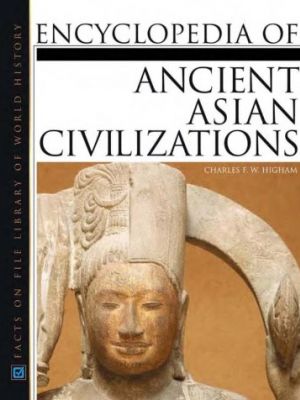Detail Buku

| Judul | Encyclopedia of Ancient Asian Civilizations |
| Penulis | |
| Deskripsi Fisik | 465 halaman |
| Penerbit | Fact On File |
| Kota | New York |
| Tahun | 2004 |
| ISBN | 0-8160-4640-9 |
| DDC | |
| No Panggil | |
| Genre/Subjek | |
| Bahasa | Inggris |
| Seri | |
| Update Terakhir | Rabu, 05 Mei 2021, 13:01 wib |
This volume concentrates on the civilizations that arose east of the Caspian Sea. These early civilizations of Asia developed over a vast territory stretching from the region of modern Afghanistan and the Aral Sea to Japan and Korea, and from Sri Lanka (former Ceylon) to the islands of Southeast Asia. These civilizations developed in the oases that bordered the arid Taklamakan Desert in western China and the tropical jungles of Java in Indonesia.
Virtually every major river basin sustained one or more early states, along rivers like the Yalu, which flowed through the icy cold of a Korean winter, or the Irrawaddy and the Chao Phraya, which ran through the pervading heat of their valleys. Early Western visitors to East and Southeast Asia were invariably taken aback by the scale and power of the rulers they encountered. Even the mighty army of Alexander the Great (356–323 B.C.E.) rebelled at the prospect of advancing beyond the Beas River into India. Romans, Greeks, and Persians were keen to trade with the East but barely gained a foothold on Asian soil.
When intrepid Portuguese friars penetrated the jungles of Cambodia in the 16th century and came across a great stone city abandoned to the forest, they were so surprised that they could advance only the Roman emperor Trajan (98–117) or Alexander the Great, rather than the Cambodians, as being responsible for such magnificence.
Those Portuguese, as many later archaeologists did, at once recognized the external trappings of what is now called a state society. They encountered large temples and walled cities, huge reservoirs, and inscriptions of texts in an unknown form of writing. Had the people of Angkor constructed their palaces as well as their temples in stone, the friars would also have found large, opulent, and richly ornamented domestic buildings. The discovery of palace foundations, however, had to await more recent archaeological excavation.
Daftar Lampiran
|
|
Asia 05-Mei-2021, 13:02 WIB |
Baca |